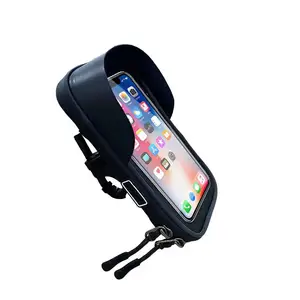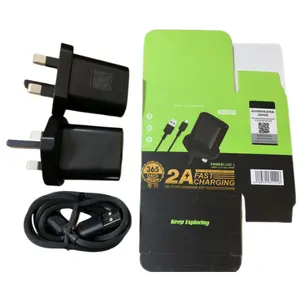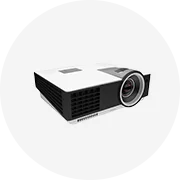Popular na sua indústria






Receptor direcional omni da banda dupla 360 graus, 50 mile sem fio, longo alcance 5km 5dbi pato de borracha 2.4g 5.8g roteador wifi antena
€ 0,5381 - € 0,8257
Pedido Mínimo: 10 Peças





Venda quente Antena Indoor Tv Antena Digital Hdtv Antena Alta Ganho Hd Ao Ar Livre Antena De Tv De Longo Alcance Com Longa Garantia
€ 4,54 - € 6,96
Pedido Mínimo: 2 Peças







Antena de TV HDTV para painel interno, antena digital 4K para recepção de sinais digitais, antena de TV HD
€ 1,51 - € 2,34
Pedido Mínimo: 10 Peças







Antuko 150 mile amplificador de 360 graus hd, antena digital de tv ao ar livre 1000 milha de antena de tv 360 omni-direcional
€ 3,90 - € 6,87
Pedido Mínimo: 2 Peças







Melhor sinal 28dB Antena VHF/UHF Digital HDTV Antena com Base Magnética Antena de TV DMB-T DVB T2 interna ativa com amplificador
€ 2,32 - € 3,25
Pedido Mínimo: 2 Peças






RG0.81 RG1.13 RG1.37 RG178 Cabo Coaxial IPEX Montar Antena GPS Com Cabo IPEX
€ 0,167 - € 0,4453
Pedido Mínimo: 100 Peças






Antena digital de malha externa parabólica, antena c band 1.8m 180cm hd para tv digital
€ 11,14 - € 139,16
Pedido Mínimo: 1 Peça






Topsale antana produto yagi grande malha, ganho alto uhf vhf tv antena hdtv aeiral digital externo hf tv antena
€ 3,99 - € 6,50
Pedido Mínimo: 500 Peças



Antena digital hd pequena da faixa parabólica do ku da tv por satélite
€ 3,34
Pedido Mínimo: 5000 Conjuntos



Redondo ao ar livre 606-670mhz 15dbi dia. Antena parabólica digital de liga de alumínio, antena para tv de 1200mm
€ 12,06 - € 14,85
Pedido Mínimo: 1 Peça






Zap ku60 antena satélite portátil e pequena, design de antena digital para uso comum ku band 60cm
€ 4,25 - € 5,18
Pedido Mínimo: 25 Peças






360 Recepção de Sinal Canais livres Hdtv Internet Sem Fio Smart Tv Antena Sinal Amplificado 1080P 4K 8K Digital Antena de Tv Interior
€ 0,6402 - € 3,70
Pedido Mínimo: 10 Peças
Buscas Relacionadas:
visto na antena da tvantena digital terrestre tvantena tv digital ulantena tv digital 25dbantena tv digital cmmbantena tv pronta digitalantena tv super hdantena tv digital mmdsantena tv simplesantena tv mais poderosaantena tv digital do ganho altoantena tv longa distânciaantena tv ku 35antena tv huatongantena tv clareira



Antena de placa de tv digital parabólica, 80cm ku, offset, tv
€ 3,25 - € 4,18
Pedido Mínimo: 1000 Conjuntos






Longo alcance uhf vhf omnidirectional hd digital aéreo ao ar livre satélite parabólica tv antena
€ 18,56 - € 23,20
Pedido Mínimo: 100 Peças






Antena digital de tv para carro, antena à prova d' água anti uv rv para carro e tv, para caravan/motor e casas
€ 6,50 - € 16,70
Pedido Mínimo: 1 Peça






Antena interna para Smart TV com recepção de sinal 360 graus, canal HDTV de 1080P 4K 8K, canal gratuito de TV digital, Internet sem fio para carro
€ 0,6402 - € 3,70
Pedido Mínimo: 5 Peças






Antena digital externa hdtv, antena rv de longo alcance para aplicação móvel, antena de tv para carro/casa/marinha com amplificador
€ 9,18 - € 27,74
Pedido Mínimo: 10 Peças






Antena amplificada de tv digital hd, antena longa de 250 + milhas de alcance 360, suporte de receptor de sinal completo 4k 1080p, vara de fogo
€ 12,53 - € 17,54
Pedido Mínimo: 5 Conjuntos
Envio por peça: € 5,00






GREENTEK HDTV Digital Antena Parabólica UHF Yagi Ao Ar Livre TV Antena Para Transmissão de TV a cabo
€ 4,64 - € 5,11
Pedido Mínimo: 200 Peças






Antena digital da tv alcance de 280 + milhas, antena interna da tv com amplificador e impulsionador de sinal
€ 3,72 - € 4,18
Pedido Mínimo: 500 Peças






Antena parabólica de TV digital para exterior, melhor antena parabólica de alta fidelidade à prova d'água e rotação de alto ganho
€ 2,32 - € 2,60
Pedido Mínimo: 10 Peças


Boa Parabólica 150 Tv Digital Antena Alto Ganho Hdtv Aérea Longa 75 Mile Range Feita Na China Antena De Tv Ao Ar Livre
€ 2,46 - € 4,64
Pedido Mínimo: 2 Peças
Envio por peça: € 14,20






Antena digital de tv direcional, amplificador via satélite, omni
€ 2,60 - € 3,53
Pedido Mínimo: 2 Peças
Envio por peça: € 5,95






Alto Ganho HDTV DVB-T2 ATSC UHF VHF YAGI parabólica ao ar livre PASSIVO Antena tv antena
€ 2,70 - € 5,11
Pedido Mínimo: 10 Conjuntos






WeiYing 2023 Novo Tipo Alta Qualidade Tv Indoor ao ar livre Antena usada tv aérea digital hdtv antena de longo alcance com garantia longa
€ 5,34 - € 13,84
Pedido Mínimo: 50 Peças


1.2m 600MHz 15dBi prato Parabólico grid Antena de comunicação
€ 51,03 - € 59,38
Pedido Mínimo: 2 Peças






Antena parabólica tipo alimentação positiva da banda ku 45cm com alta qualidade e preço baixo
€ 4,18 - € 4,37
Pedido Mínimo: 6000 Peças



Antena WiFi externa omnidirecional de alto ganho 868Mhz 915Mhz lora 5.8G antena de fibra de vidro
€ 10,21 - € 16,70
Pedido Mínimo: 1000 Peças






Antena digital de rádio parabólico, aparelho celular, rádio uhf, gps, wi-fi, comunicação externa de tv, 4g
€ 18,56 - € 37,11
Pedido Mínimo: 10 Peças





Antena magnética de tv falra z 16dbi DVB-T2 atsc, unidade de cabeça estéreo de dvd para carro
€ 3,70 - € 4,72
Pedido Mínimo: 100 Peças
Envio por peça: € 6,83






Antena à terra da tevê de Digitas da antena parabólica da antena da HDTV da onda de DTMB à terra
€ 0,7329 - € 5,11
Pedido Mínimo: 1 Peça






Bom desempenho da Antena HDTV Antena Parabólica Antena de TV Digital Indoor
€ 1,77 - € 10,12
Pedido Mínimo: 50 Peças






GSM/CDMA LTE 2G/3G ATU diamante hdtv digital vhf loop omnidirecional 38dbi rf antena sem fio rotor tv
€ 1,41
Pedido Mínimo: 1 Peça
Envio por peça: € 4,01






GSM/CDMA LTE 2G/3G ATU diamante hdtv digital vhf loop omnidirecional 38dbi rf antena sem fio rotor tv
€ 1,17 - € 1,19
Pedido Mínimo: 1 Peça





Venda quente nos eua americano market10feet3m300cm c banda prato de malha de alumínio ao ar livre de satélite digital hd tv antena parabólica
€ 0,9277 - € 88,14
Pedido Mínimo: 1 Peça



Antena redonda digital de liga de alumínio para tv, 606-670mhz 20dbi
€ 139,16 - € 148,43
Pedido Mínimo: 1 Peça






Antena parabólica digital de 75*80 cm, antena intermediária de satélite para tv
€ 3,34 - € 7,43
Pedido Mínimo: 1000 Conjuntos
Principais categorias
Sobre antena tv digital parabólica
Alibaba.com apresenta alguns dos mais eficientes e poderosos. Opções de antena tv digital parabólica que são ideais para transmitir sinais contínuos para suas TVs. Essas categorias abrangentes de produtos são feitas improvisando as tecnologias mais avançadas para desempenho superior e também são feitas de materiais resistentes para durabilidade excepcional. Estes. antena tv digital parabólica são ideais para todos os tipos de fins residenciais e comerciais e alguns dos itens mais vendidos no site atualmente. Conduzindo. Fornecedores e atacadistas de antena tv digital parabólica no site oferecem esses produtos tecnologicamente avançados a preços mais competitivos e negócios lucrativos.
A ampla gama de eficientes e superiores. As antena tv digital parabólica disponíveis no site são feitas de materiais de alta qualidade que oferecem longa duração e durabilidade aprimorada ao longo dos anos. Esses produtos são sustentáveis e ecológicos. Você pode selecionar a partir de uma vasta gama de satélites. antena tv digital parabólica compatível com todos os tipos de TVs para sinais internos e externos. Esses dispositivos são feitos de plástico, alumínio e outros metais para melhor resistência e resistência contra todas as condições climáticas e elementos externos. O. As antena tv digital parabólica oferecidas aqui estão equipadas com todos os recursos mais recentes para um desempenho ideal e entrega consistente.
A qualidade brilhante. antena tv digital parabólica disponível em Alibaba.com vêm em cores, formas, tamanhos, recursos e qualidades construídas distintas, dependendo de seus requisitos. Esses produtos são à prova d'água, anticorrosivos, não quebram e são capazes de captar sinais das formas técnicas mais convincentes. Estes. As antena tv digital parabólica vêm com excelente recepção para amplificadores digitais terrestres de ajuste de ruído e são muito fáceis de usar. Você pode comprar. antena tv digital parabólica que também vêm dentro dos decodificadores e são eficientes o suficiente para funcionar em todos os climas com precisão.
Navegue pelos diferentes. antena tv digital parabólica varia em Alibaba.com e compra esses produtos dentro de seu orçamento e conveniência. Esses produtos estão disponíveis como pedidos OEM e podem ser totalmente personalizados. Você também pode optar por serviços de manutenção e instalação pós-venda cujo custo é perdido.
A ampla gama de eficientes e superiores. As antena tv digital parabólica disponíveis no site são feitas de materiais de alta qualidade que oferecem longa duração e durabilidade aprimorada ao longo dos anos. Esses produtos são sustentáveis e ecológicos. Você pode selecionar a partir de uma vasta gama de satélites. antena tv digital parabólica compatível com todos os tipos de TVs para sinais internos e externos. Esses dispositivos são feitos de plástico, alumínio e outros metais para melhor resistência e resistência contra todas as condições climáticas e elementos externos. O. As antena tv digital parabólica oferecidas aqui estão equipadas com todos os recursos mais recentes para um desempenho ideal e entrega consistente.
A qualidade brilhante. antena tv digital parabólica disponível em Alibaba.com vêm em cores, formas, tamanhos, recursos e qualidades construídas distintas, dependendo de seus requisitos. Esses produtos são à prova d'água, anticorrosivos, não quebram e são capazes de captar sinais das formas técnicas mais convincentes. Estes. As antena tv digital parabólica vêm com excelente recepção para amplificadores digitais terrestres de ajuste de ruído e são muito fáceis de usar. Você pode comprar. antena tv digital parabólica que também vêm dentro dos decodificadores e são eficientes o suficiente para funcionar em todos os climas com precisão.
Navegue pelos diferentes. antena tv digital parabólica varia em Alibaba.com e compra esses produtos dentro de seu orçamento e conveniência. Esses produtos estão disponíveis como pedidos OEM e podem ser totalmente personalizados. Você também pode optar por serviços de manutenção e instalação pós-venda cujo custo é perdido.





































